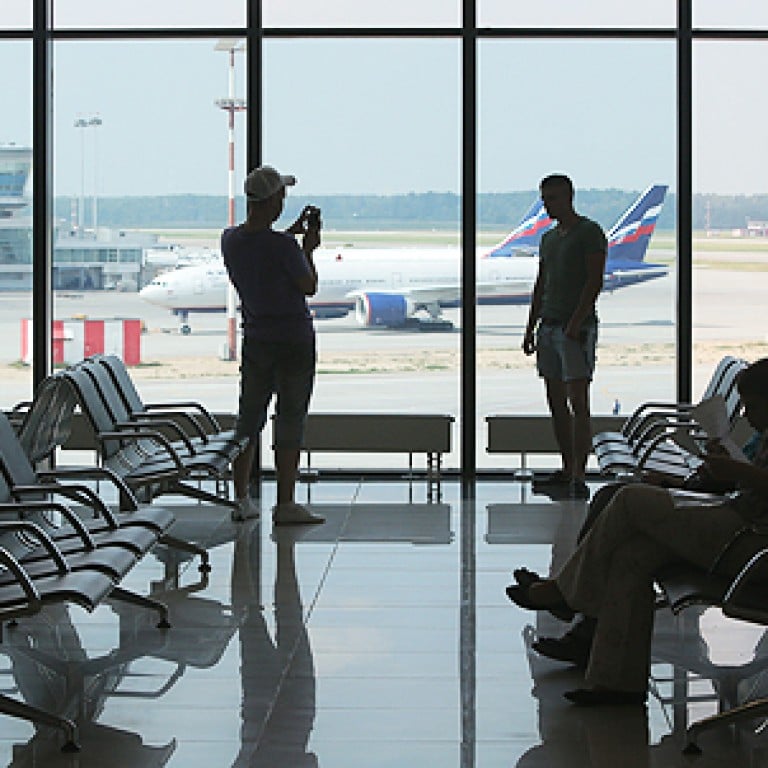
Snowden just latest in list of figures trapped in transit limbo
Whistle-blower's plight follows a path familiar to fugitives stuck in transit with nowhere to go, sometimes waiting for years for asylum
Amid the thousands of people passing through Moscow’s Sheremetyevo Airport, Edward Snowden is – if Russia’s government is to be believed – staying put. That makes his situation unusual, but for all its extraordinary elements of intrigue, it’s not unique.
The former National Security Agency contractor who leaked US surveillance secrets is not the first person to be stranded in the legally ambiguous zone between the arrivals gate and the immigration desks of an international airport.
Russian President Vladimir Putin says Snowden is in the airport’s transit area after flying in from Hong Kong on Sunday. Authorities in Moscow say he is not officially in Russia and is free to leave.
Here, it’s not life. It’s just staying like a passenger and waiting for departure. To be here is just like being in transit
But US officials have issued a warrant for his arrest and have revoked his passport – meaning that there are few places he can go.
Snowden could end up joining the roster of unwilling airport residents whose ordeals, suspended between states, have stretched on for months or even years.
Putin said on Tuesday that Snowden has not passed through Russian immigration, so he is not technically in Russia.
That’s more a diplomatic convention than a legal reality, according to James C Hathaway, director of the Program on Refugee and Asylum Law at the University of Michigan law school.
“Moscow airport is as much a part of Russia as is the Kremlin,” Hathaway said in an e-mail.
“Many nations pretend that airport transit lounges are not part of their territory, indeed not under their jurisdiction. As a matter of international law, this is completely false.”

In 2010 the US State Department cited the case of 16 Somali asylum seekers who “spent several months living in the airport’s transit zone, at times compelled to beg for food from airline passengers”. The State Department report said they were unable to apply for Russian asylum and were forced to turn to the United Nations for help.
Iranian human rights activist Zahra Kamalfar spent more than nine months in the airport’s transit lounge with her two children in 2006-2007 before Canada granted her asylum.
Other airport denizens have become stranded through bureaucratic or political misfortune. Chinese human rights activist Feng Zhenghu camped out at Tokyo’s Narita airport for three months in 2009 after Chinese officials barred him from returning home. He slept on a plastic bench and survived on handouts of crackers and noodles from passers-by until Chinese authorities relented and let him fly to Shanghai.
Hiroshi Nohara of Japan spent almost three months at Mexico City’s airport in 2008, becoming a local celebrity, frequently interviewed by television crews. He turned out to have a valid visa for Mexico, and never disclosed the reasons for his stay.
The most famous airport resident was Mehran Karimi Nasseri, an Iranian who spent 18 years inside Terminal 1 of Paris’ Charles de Gaulle airport. He lost papers confirming his refugee status and got stuck in a bureaucratic vicious circle with officials from several European countries refusing to provide him with documents that would allow him to leave the terminal.
His airport life there developed a kind of domestic routine. He slept on a red plastic bench surrounded by his boxes and bags. The pharmacy took his phone calls and fast food restaurants provided him with meals. But it was also a Kafkaesque existence, without purpose.
“Here, it’s not life. It’s just staying like a passenger and waiting for departure,” Mehran told the AP in 2004, when he’d been in the airport for 16 years. “To be here is just like being in transit.”
Mehran’s ordeal, which ended in 2006 when he was hospitalised, was recast as a romantic comedy in the movie , in which Tom Hanks played a man denied entry to the United States because his native country descended into a civil war. Stuck at New York’s JFK airport, he falls in love with a flight attendant.
The eventual outcome of Snowden’s predicament is unclear. As a wanted man without a passport, his travel options are extremely limited.
His best bet could be to seek political asylum from a country that would grant him safe passage. Iceland has been mentioned, and Ecuador says it has already received an asylum request from Snowden.
“Having documents to travel is not a prerequisite to applying for asylum,” said Laura Padoan of the United Nations refugee agency.
The UN agency says there are established procedures allowing countries to grant travel documents for the resettlement of refugees who do not have passports or other papers.
It’s unclear whether Snowden possesses such a document. WikiLeaks founder Julian Assange, who has been aiding Snowden’s journey, says Ecuador has granted him a refugee document that will allow him to travel. Ecuadorean Foreign Minister Ricardo Patino, however, has said he does not know what travel documents Snowden is using.
Ecuador says it is considering Snowden’s asylum request – but Patino said on Wednesday that coming to a decision might take months.
